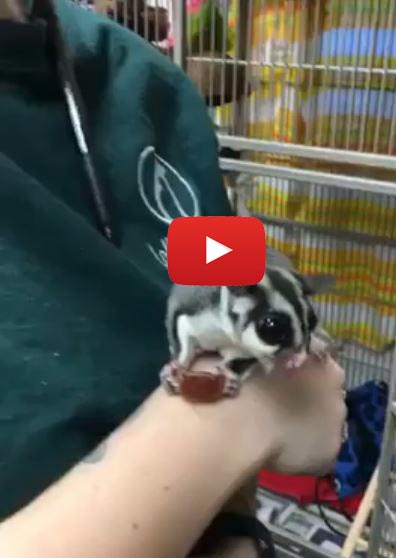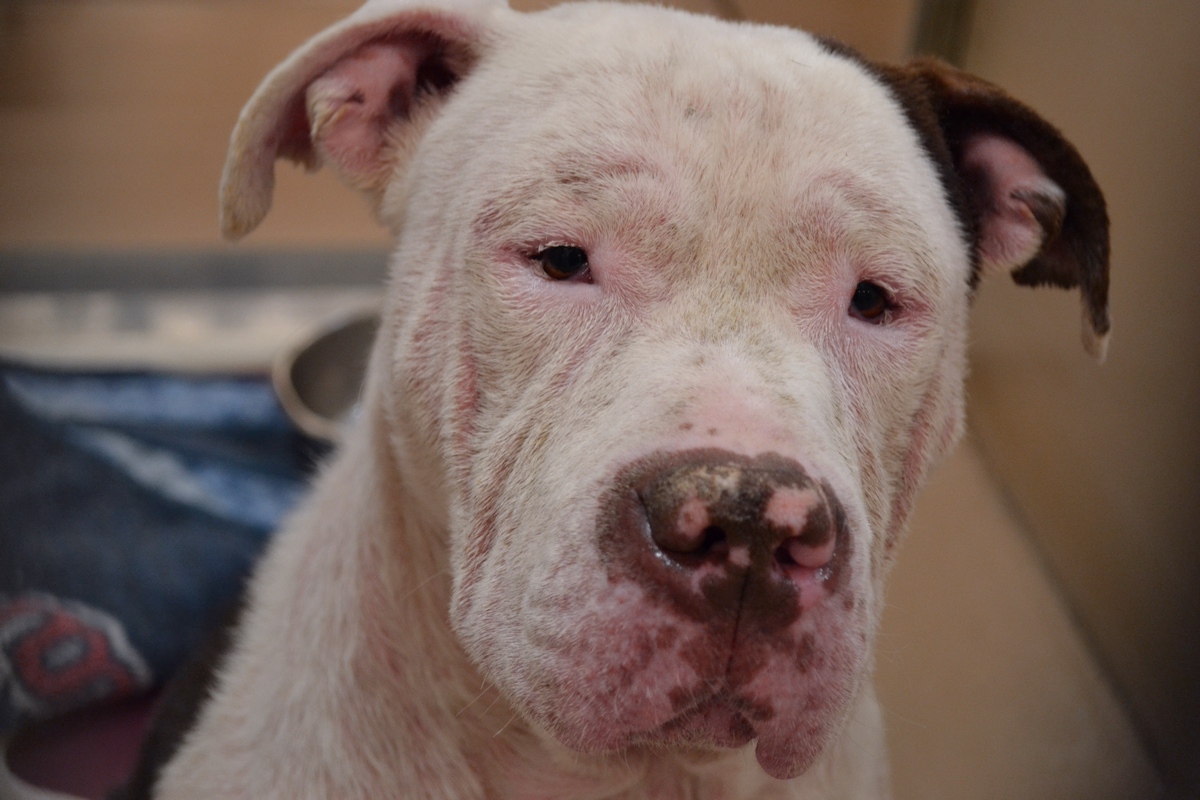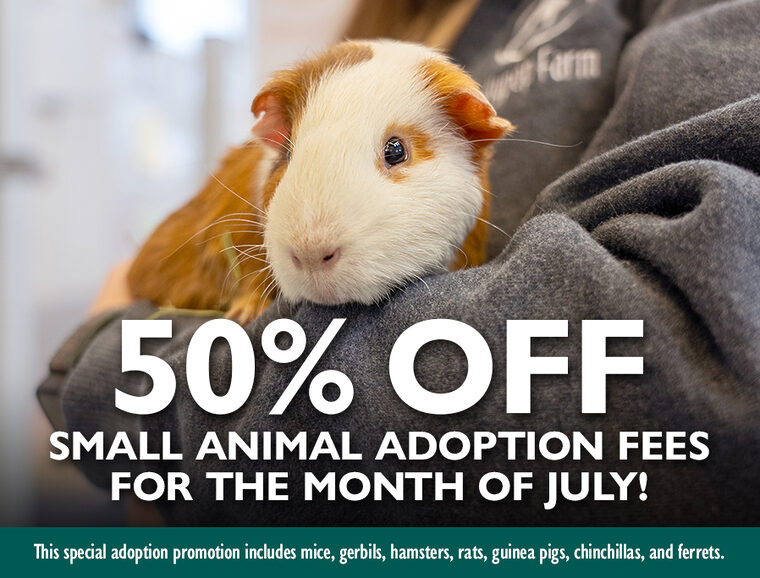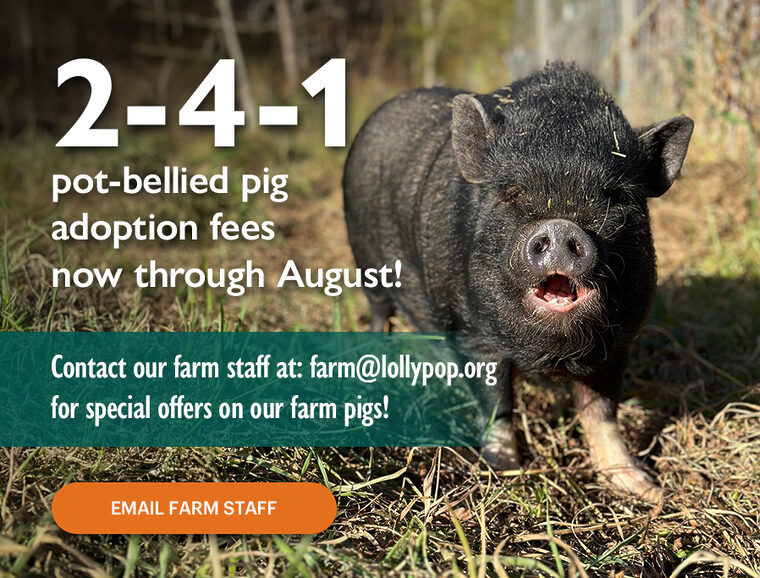A sugar glider named Synester was recently surrendered to Lollypop Farm – a type of small pet that is not often seen here! Our staff went straight to work determining just what the best diet and environment would be to keep this little glider happy and healthy while she waited for a new home (which she has already found!)

What is a sugar glider?
Sugar gliders are nocturnal marsupials that eat a diet consisting primarily of fruits, seeds and vegetables. They live, on average, up to 15 years, which is quite a long lifespan for such a small creature. They are very intelligent animals and make wonderful pets – they’re known to be especially happy if they have the companionship of another sugar glider. While sugar gliders don’t mind warm temperatures, they have very sensitive eyes and skin, and should therefore be kept out of areas where they will be prone to cold drafts and direct sunlight or very bright indoor lighting.
These small pets are unusual in the sense that they tend to bond with one owner – sometimes more than one. The more handling they receive the better! They are creatures that desire contact, and will happily snuggle all day in the pocket of a hoodie. They make a chattering sound (also known as crabbing) while bonding with their human companions. Think of it as a “getting to know you” sound. Some sugar gliders may never make a sound at all unless they feel startled or threatened, while others will “bark” – a sound resembling that of a dog, usually to get attention or indicate feeling frightened. Purring or chirping is also a common sound, indicating comfort and affection.
Crafting the perfect diet
Creating a mixture of different foods, or a salad, is a great way to make sure that your sugar glider is getting the most out of their nutritious meals. A salad can include finely chopped fruits (banana, kiwi, mango, or orange) and vegetables (greens, green beans, sweet peppers, or sweet potato). Combine the fruit and vegetables with scrambled eggs, yogurt, applesauce, and a small amount of calcium-fortified orange juice concentrate. Sugar gliders also love honey and seeds like unsalted, non-flavored pumpkin or sunflower seeds.

Creating the ideal habitat
Sugar gliders need space to roam! Their cage should be at least 2’ x 2’ x 3’, the bigger the better. Like most other pets, gliders love toys! It’s a good idea to have a supply of several different types of toys to keep them entertained, and you can even increase enrichment by rotating out different toys every now and again. Much like hamsters and mice need exercise, so do sugar gliders! Providing them with a wheel in their cage, as well as multiple levels, perches, hammocks and climbing ropes will keep them both happy and healthy. Food dishes can be on an easy-to reach level, or hanging, and a comfy sleeping area is essential! A nesting box or sleeping pouch lined with fresh bedding material will be the sugar glider’s very favorite place.
Click here to view our adoptable small pets.




